Filling the heating system with coolant: how to fill the
To construct a heating system for a house or apartment, a heating boiler, heating radiators and pipelines connecting all elements into one network are necessary. However, it will not function without a coolant, which transmits the thermal energy generated from the combustion of fuel to the air in the room. Therefore, after the completion of installation or repair work, there is always the question of how to fill the heating system with water or another suitable liquid. Instructions on this issue are listed below.
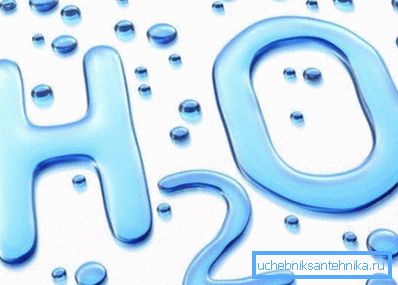
The need to fill and discharge fluid from the heating system
First of all, we will consider the purpose of which the coolant is discharged from the heating system.
Most often, it is necessary to remove water from pipes for scheduled repairs. This is especially true of apartments connected to centralized heating systems. In the summer, the shut-off and control valves, failed pipelines, etc. are replaced.
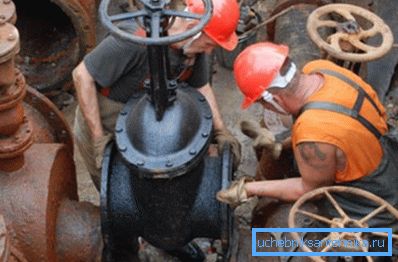
But if you live in a private house, it is not recommended to drain the coolant for the following reasons:
- When re-pouring water you need to re-produce the system. This event is long and troublesome, because every owner wants to avoid it.
- The lack of water in some types of radiators (for example, steel) leads to rapid corrosion. If you drain the water from the system for the summer, get ready for an emergency replacement of radiator radiators for heating the house.
- Annual removal of coolant requires the purchase of a new. Special antifreeze or specially prepared water is quite expensive, so it leads to an unjustified increase in operating costs for the maintenance of the heating system.
The procedure for pouring fluid into the heating system
Preparatory operations
Regardless of whether you are launching a new, self-assembled heating system or filling it with coolant after the end of the warm season or repair, it is imperative to prepare the engineering network for operation.
The procedure is as follows:
- Flushing the pipeline. This action is required before the launch of a new heating system. Otherwise, shavings, dross and other debris can damage the heating and pumping equipment used. If your climate network has already been launched and successfully operated, it is enough to flush the pipes and batteries once every two years.
- Hydraulic test. Before filling the heating system with water, it is necessary to pressurize it. To do this, use a special device that fills pipes and radiators with compressed air.

It is necessary to build up pressure until its value is 25% higher than the calculated one. The standard drop in this indicator should be no more than one percent in 15 minutes of operation.
- Elimination of defects. After crimping, you need to check all connections for leaks and fix them if found.
Note! Sealing leaks is not so much to minimize the flow of coolant, but rather to prevent air plugs in pipes and radiators, which cause inoperability or low heating efficiency.
The choice of the type of coolant
Most often, water is used as a heat transfer fluid. However, you can use antifreeze, which does not freeze when the ambient temperature drops below zero. It has many other advantages, but its price is quite high. Most often antifreeze is used in heating systems of small buildings.
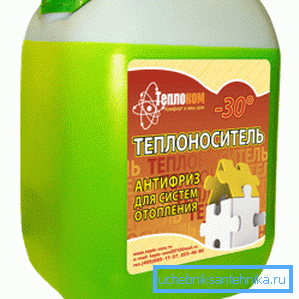
Remember that filling the heating system with water requires preliminary preparation. The liquid should be free from salts and air dissolved in it, for which commercially available chemicals and reagents can be used.
Tip! It is not recommended to use tap water as the heating medium of the heating system. It contains a large amount of calcium and other minerals, which, settling on pipes and in batteries, will eventually lead to inoperability of heating. Also in the tap water dissolved a large amount of oxygen, which causes airing.
Whether to use specially prepared water or antifreeze for filling is up to you. But in any case, it is necessary to correctly calculate the volume of fluid required to perform this procedure.

Determination of the amount of heat carrier used
To know the volume of water or antifreeze that will be needed to fill the heating system, it is necessary in order to choose the right water treatment equipment of the required capacity or to purchase a certain amount of special liquid in advance.

To perform the calculations you need to clarify the following data:
- the volume of water that is placed in the water-heating boiler (OK), one section of installed radiators of heating (ОR) and expansion tank of open or closed type (О) - all figures are available in the accompanying documentation for the above equipment;
- the volume of water that is placed in the pipes (From) - for this you need to use a special building directory where similar information is placed, or calculate the desired value using the following formulas:
S =? * R2, where:
- S is the cross-sectional area of the pipe;
- ? - constant equal to 3.14159;
- R is the internal radius of the pipe.
From = S * L, where:
- From - the required volume of fluid in the pipe;
- S is the cross-sectional area found by the above formula;
- L is the length of all installed pipelines.
The total volume of water is calculated by the following formula:
General = OK + (Op * s) + Ob + From, where
с - the number of installed sections of radiators.

Tip! Despite the fact that water and antifreeze are not compressed, it is advisable to acquire 10-15% more liquid than the volume that you received through calculations. Such a margin will cover the calculation error.
Water pouring
As soon as you have finished flushing, made a test of the pipes and stocked up with a sufficient amount of coolant, you can begin to fill the heating system. This will help the vibrating pump to fill the heating system.
Remember, this is the most important stage of the installation of the climate network, because all operations must be carried out carefully and carefully.
The procedure consists of several successive steps:
- Once again, all the joints are inspected for leakage and depressurization.
- Shut-off valves, removing the liquid from the heating system. This will help avoid unproductive coolant flow.
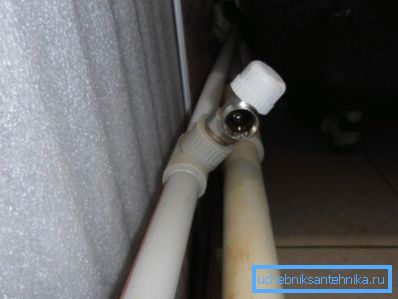
- The operation of the air valves is checked. If their performance is weak, it is better to completely unscrew the corresponding device (Mayevsky's crane) and return it to its place at the end of the pouring. In addition, with the same purpose, you can open the valve somewhere in the upper part of the system, which will reduce the time for air to escape from pipes and batteries.
- Filling should begin through the valves that are closest to the boiler.
- Keep water or antifreeze flowing at the lowest possible speed. This will allow the air remaining in the pipes to exit through pre-opened valves. Otherwise, the formation of traffic jams.
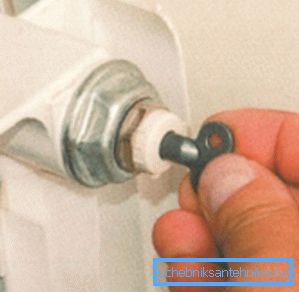
- As the pipes are filled, it is necessary to shut off those taps and valves through which the coolant begins to pour. That is why it was necessary to buy it with a certain stock.
- Filling the system can be done not immediately, but in parts: starting from the first floor and ending with the topmost points.
Quality check
When calculating the required volume of coolant, it is desirable to determine this figure not only for the entire system, but also for its individual sections. As a result, you can more accurately control the degree of filling of individual elements of the climate network.
In addition, a fluid flow meter can be installed at the inlet port.
Thus, you will know exactly how much has already fallen into the pipes:
- if less than the calculated value - air has accumulated in the pipes, it is necessary to determine the place of formation of the plug and eliminate it;
- if more, then there is a leak somewhere through a loose connection or an open tap.
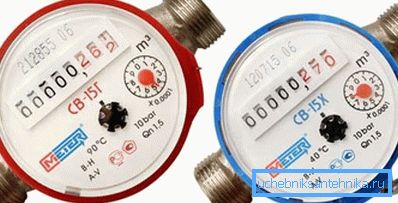
Starting up the heating system
Air residue removal
Having made a full fill of the heating system, it is possible to proceed to its commissioning. However, before this you need to remove residual air from all installed equipment.
This is done as follows:
- The air is removed from the main pipe of the boiler house. An air valve installed on the heating equipment is used for this.
- If the system has a pump for the forced circulation of water, it is also necessary to release air from it. For this purpose, an air valve is used in its front end.
- The next stage is the removal of air plugs from the radiators. This needs to be done with each installed battery, starting with the first floor and ending with the topmost one. This is done simply: with the key of Mayevsky or with a screwdriver, you need to unscrew the Mayevsky's tap and hold it so until a trickle of water flows from the hole.

- Check the return line. For this purpose, valves installed in certain sections of the pipe are also used. The valve on the jumper between the supply and discharge pipes must be closed.
- Having finished the work on the recovery, you need to let the system stand for about 2 hours, then start the boiler.
Turn on the boiler
Before turning on the heater, it is necessary to start the pumps that circulate the liquid. They should work a few hours. The pressure of the liquid should be about 2 atmospheres.
Tip! Use this time to inspect the system again for leaks. If they appear, the pump must be stopped, the joints should be sealed and the water must be filled again.
All work on the launch should be carried out at a positive temperature in the premises. Otherwise, ice may form and damage pipes, pumps and radiators.
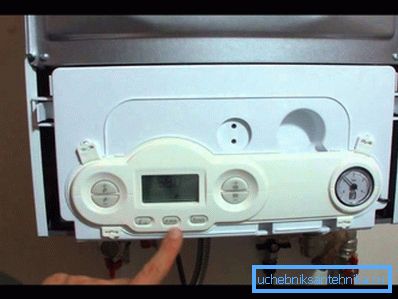
Conclusion
Filling the heat-transfer fluid is a crucial stage in the commissioning of the heating system. From the correctness of all the work depends on how effective and economical it will work. You can learn more about this in the video below.